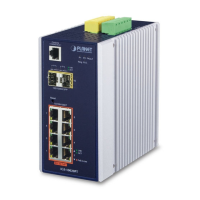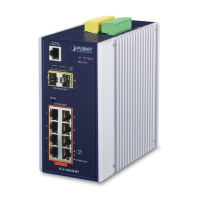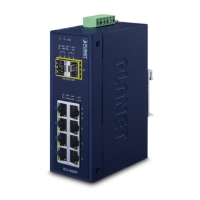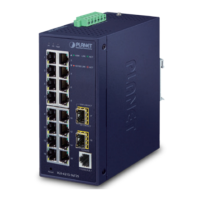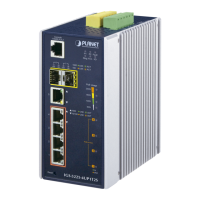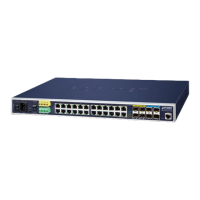User’s Manual of IGS-10020MT
4.14.7 LLDP Neighbours EEE Information
By using EEE power savings can be achieved at the expense of traffic latency. This latency occurs due to that the circuits EEE
turn off to save power, need time to boot up before sending traffic over the link. This time is called "wakeup time". To achieve
minimal latency, devices can use LLDP to exchange information about their respective tx and rx "
wakeup time ", as a way to
agree upon the minimum wakeup time they need.
This page provides an overview of EEE information exchanged by LLDP. The LLDP Neighbors EEE Information screen in
Figure 4-
14-6 appears.
Figure 4-14-6: LLDP Neighbors EEE Information Page Screenshot
The page includes the following fields:
Object Description
Local Port
The port on which LLDP frames are received or transmitted.
Tx Tw
The link parther's maximum time that transmit path can holdoff sending data after
deassertion of LPI.
Rx Tw
The link parther's time that receiver would like the transmitter to holdoff to allow
time for the receiver to wake from sleep.
Fallback Receive Tw
The link parther's fallback receive Tw.
A receiving link partner may inform the transmitter of an alternate desired
Tw_sys_tx. Since a receiving link partner is likely to have discrete levels for
savings, this provides the transmitter with additional information that it may use
for a more efficient allocation. Systems that do not implement this option default
the value to be the same as that of the Receive Tw_sys_tx.
Echo Tx Tw
The link partner's Echo Tx Tw value.
The respective echo values shall be defined as the local link partners reflection
(echo) of the remote link partners respective values. When a local link partner
receives its echoed values from the remote link partner it can determine whether
or not the remote link partner has received, registered and processed its most
recent values. For example, if the local link partner receives echoed parameters
that do not match the values in its local MIB, then the local link partner infers that
the remote link partners request was based on stale information.
315
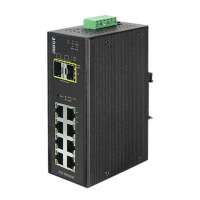
